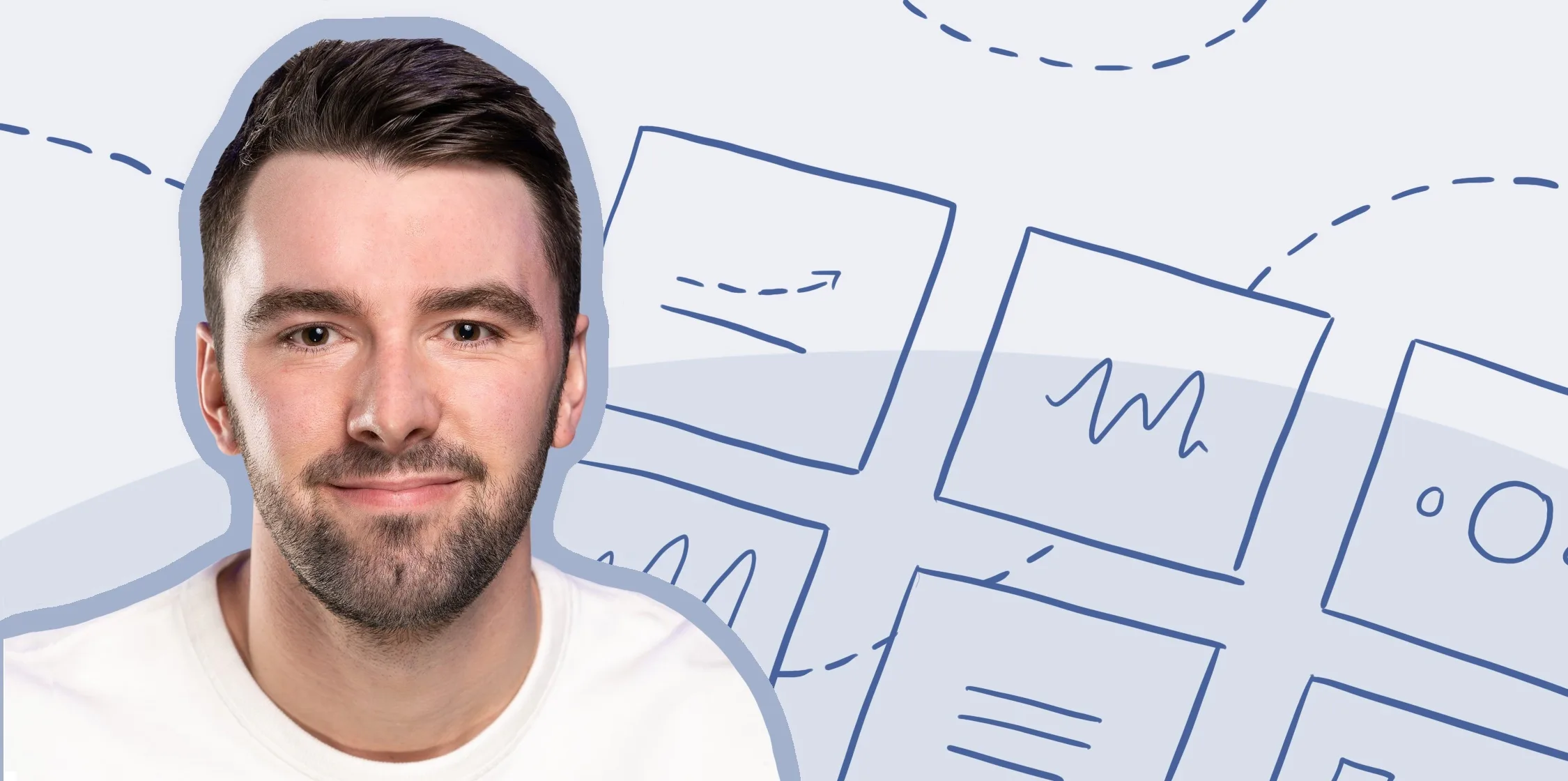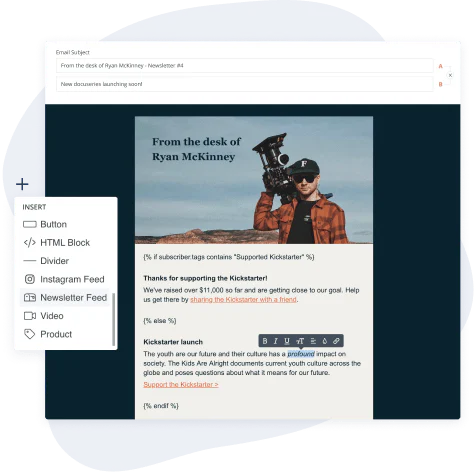In this Article
“BIG SALE!!!!”
“TODAY ONLY! 40% OFF!”
“GUESS WHAT’S ON SALE??”
These are just a few examples of the loud subject lines jockeying for position in inboxes today. While there’s nothing wrong with the occasional excited subject line, it seems like more and more big-name brands email daily (or sometimes more than once!) with offers we can’t refuse.
When Jack Butcher of Visualize Value started building his email list, he knew he didn’t want to follow the crowd. His marketing strategy, like his design philosophy, is minimalistic and comes from years of experience.
“I started my career as a graphic designer and then burned out building my own marketing agency,” he says. “I started Visualize Value in response to that experience. How do you visualize the value of something that is intangible? It’s gone through several iterations, but today it’s a set of products that help entrepreneurs, designers, and creative people figure out how to position themselves in the internet economy.”

Jack Butcher transformed Visualize Value from a marketing agency trying to do it all to a focused suite of creative products.
Jack started marketing Visualize Value exclusively on social media, going viral with minimalist designs of inspirational quotes like this one:
An example of how Visualize Value gets straight to the point.
“I started with these minimal, monochromatic designs and saw a lot of traction with it,” says Jack. “Ultimately, we began to focus on email because it’s a much better way to get in front of an audience. You’re lucky to get 1% engagement on social media, and even then, it’s wedged in the middle of all this other stuff. I would need 4 million followers to reach the same number of people I reach with email.”
Email fits with Visualize Value’s high intent, low noise brand ethos. Today, they reach more than a million people between their social following and their 55,000-person email list.
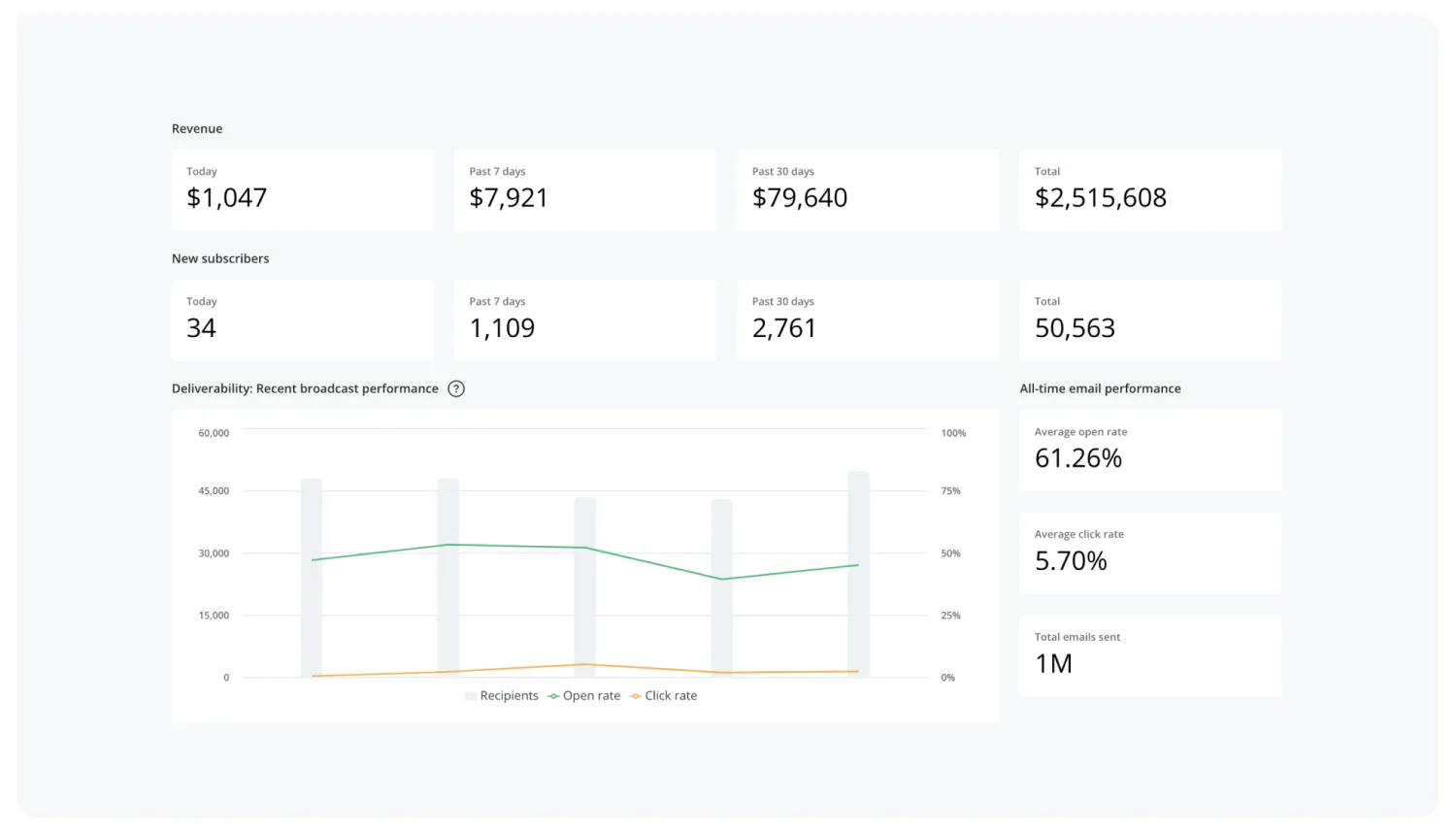
With Kit, Jack focuses on optimizing his engagement over list-building.
Using Kit Creator Pro, he averages a 61% open rate and 5.7% click-through rate. Says Jack, “I bounced around for several years at different providers before getting serious about email [and switching to Kit]. Kit is a prominent pillar in everything we do.”
Here’s how he makes his emails so valuable for his subscribers that they can’t wait to receive the next one:
Embrace a minimalist marketing philosophy
An intentional focus on minimalism underpins Jack’s marketing strategy. “This popular idea of ‘niching down’ is, ironically, so broad,” he says. “Think about the output more than the niche. You’re basically competing on the way you think.”
That translates into a marketing philosophy that prioritizes engagement and conversation over reach. Thinking about community naturally keeps the focus on high-quality creative output, which keeps his audience coming back for more.
A community focus is also why Jack takes a radical approach to email copy. “We try to be as transparent as possible with our marketing and why we’re sending emails, so we break the fourth wall a little bit,” says Jack. “I will say, ‘I’m sending you these emails because I’m betting if you learn something new, you might take a gamble and spend $1 with us. And if you feel like you got far more than $1 value from this, then you might spend $100 next time.’ Literally. That has definitely helped build trust in us.”
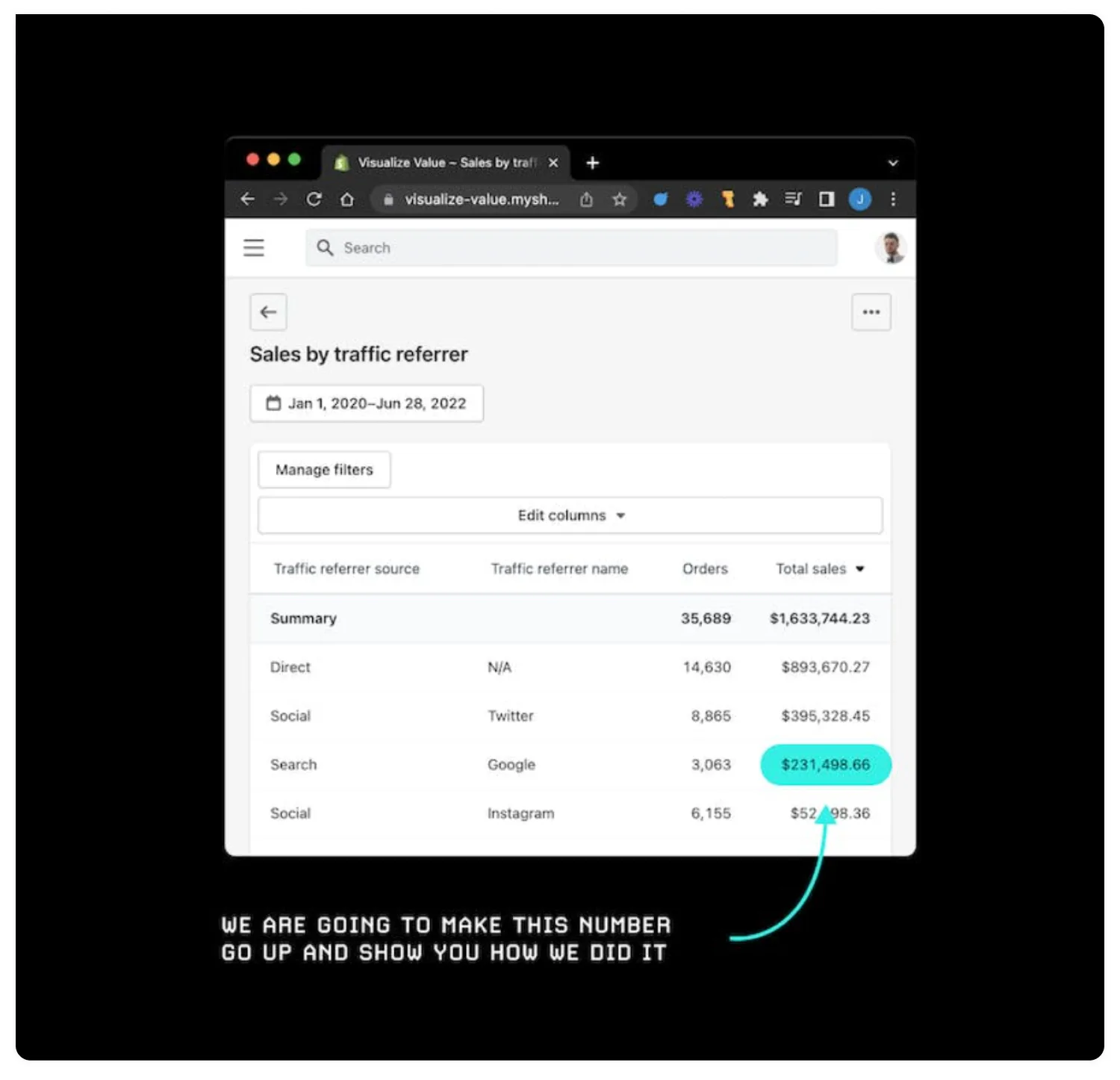
An example of transparency in action from a recent sales email.
The more you can consistently deliver what you say you’re going to do, the more you’ll build an audience that knows what to expect. This slowly builds trust in your creative work, so when you need to ask for the sale, it won’t feel like an annoyance.
One-off emails that make an impact
Part of why Jack sees such a high open and click-through rate? He doesn’t send many emails. That way he builds anticipation between each email send, so his subscribers can’t help but want to open them.
“I send maybe one or two emails a month,” he says. “80% of the time, I just have an idea and want to get it out there. I don’t plan ahead.”
Rather than batching emails, Jack tries to stay true to what he’s currently thinking about or working on, and he knows his audience responds to that authenticity. “The ones that tend to get the best response are short to medium-ish form writing and then asking a question or for feedback. It blows my mind how much time and effort goes into the responses I get to my emails when I do that,” he says.
He often deconstructs recent illustrations as another flavor of his transparency focus, like this email:
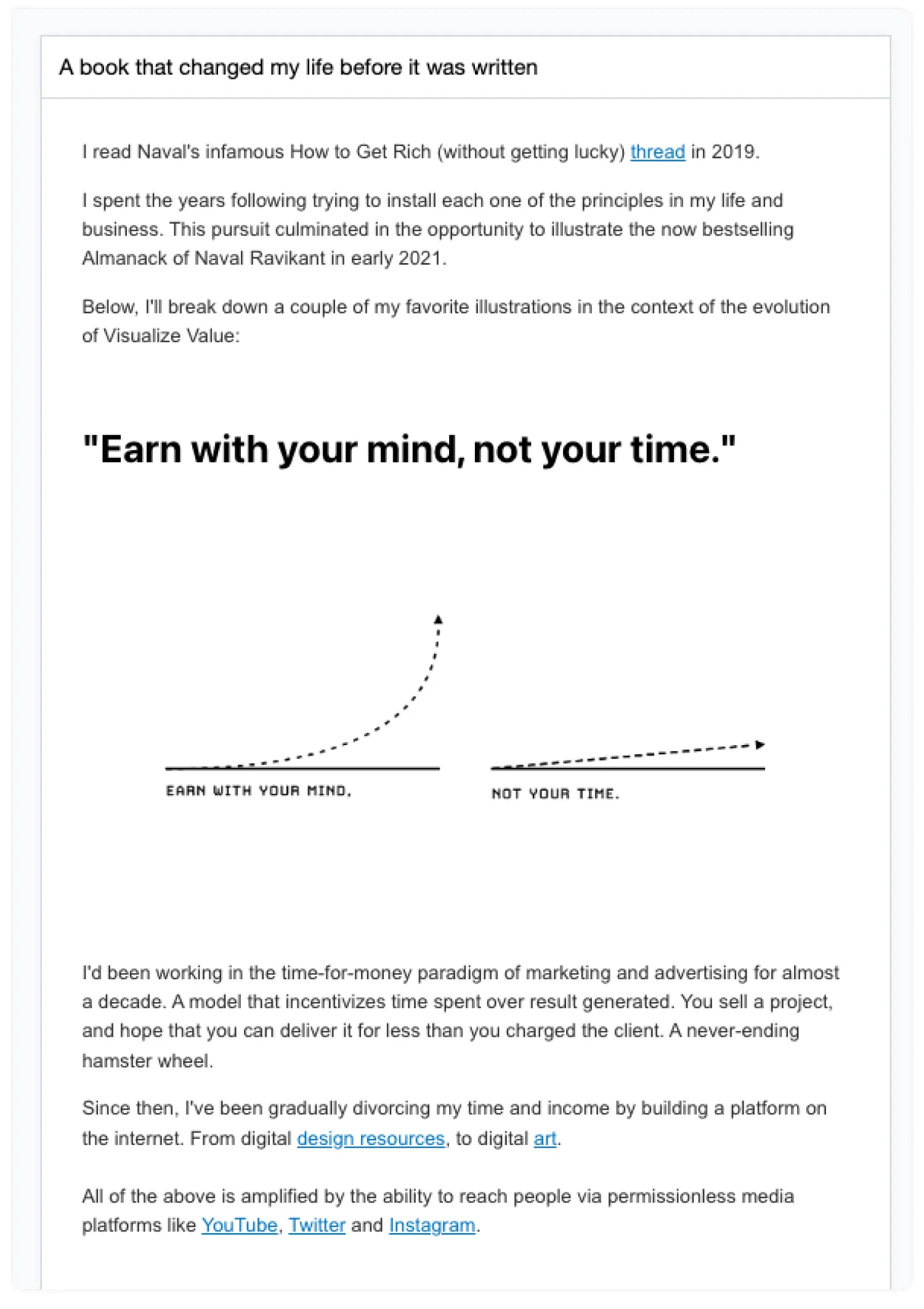
Going through some of the illustrations Jack did for a bestselling book.
This kind of email works for Visualize Value’s audience and remains one of their best-performing emails to date:

One of Visualize Value’s best-performing emails has a 56.1% open rate.
When he does want to promote his products, he does so few and far between. “I try to make the emails as interesting as possible with an editorial focus, and maybe four or five times a year I’ll make a really incentivized promotion using a plain text email design,” says Jack. “I think that has helped people stay on the list and not feel like they’re just getting bombarded with stuff all the time.”
A recent promotion looked like this, short and sweet:
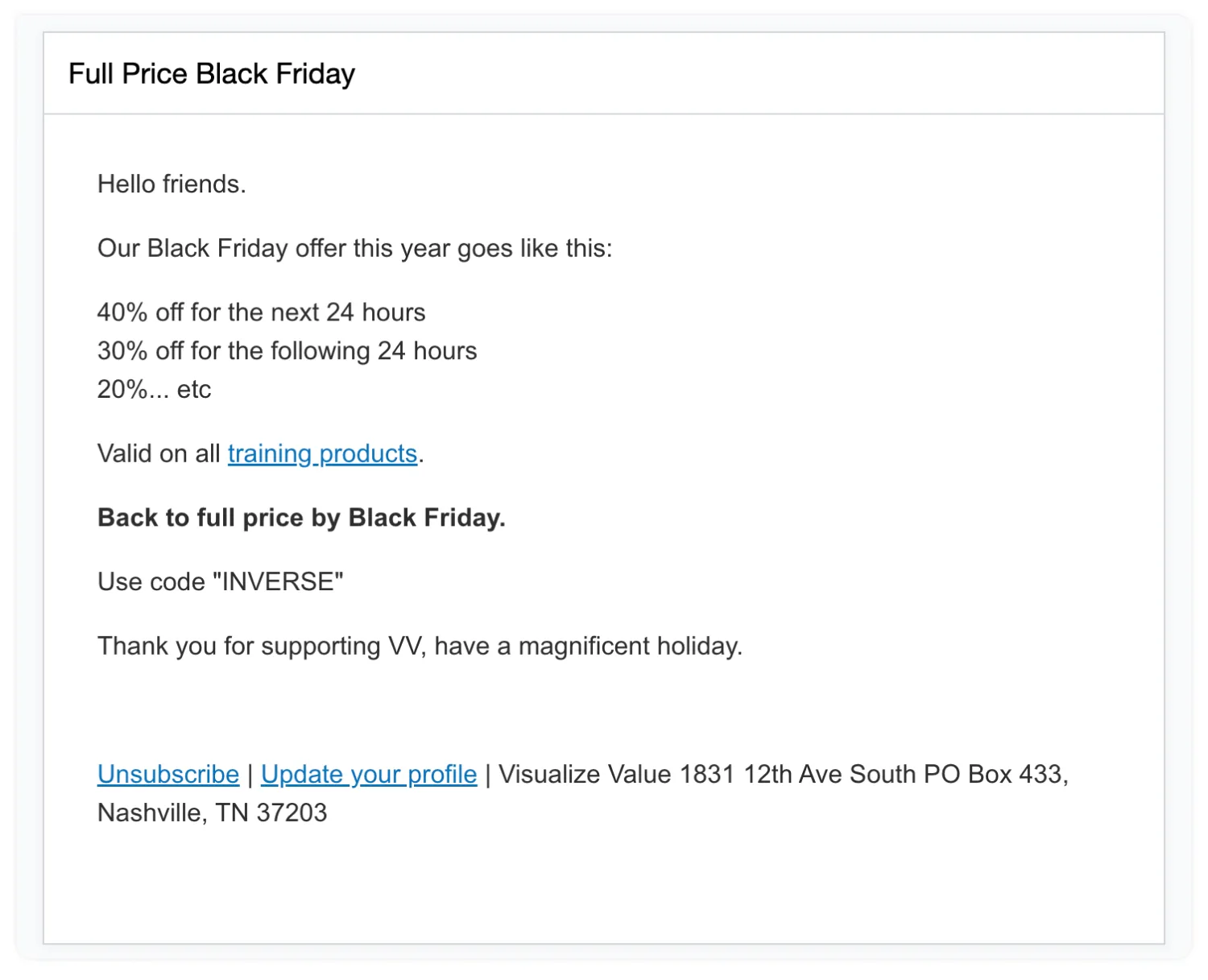
One of the few times a year Jack sends a promotional email is on Black Friday.
By striking a fine balance between softer promotions in his regular emails and only using dedicated email space a few times a year for harder sells, Jack primes his audience to know that any time he sends an email, it’s worth reading — so they’re that much more likely to say yes when he does ask for their dollars.
Background sequences that keep the train running
But that doesn’t mean Jack sends every single email himself. Because he writes most of his newsletters and promotions on the fly, he uses Kit automations to make sure he’s keeping the lights on for his products. “Kit is such a great tool so that I can make sure someone who goes through our curriculum can hear from us,” he says. “I obviously can’t do that manually because that would be a full-time job. This keeps the train moving and allows us to make sure we have a mechanism for feedback.”
Another creative way to use automations is by creating email-based products. This works as a lead magnet to draw in new subscribers, but for Jack’s audience, it’s often a way existing subscribers double down on their engagement.
“I built a 10-email sequence using Kit where each email is a different lesson and visual,” says Jack. “It’s meant to be a paradigm shift from working in a more traditional way and reframing your opportunities. We have this sequence go out and then a very, very soft sell at the end that talks about our in-depth curriculums we have.”
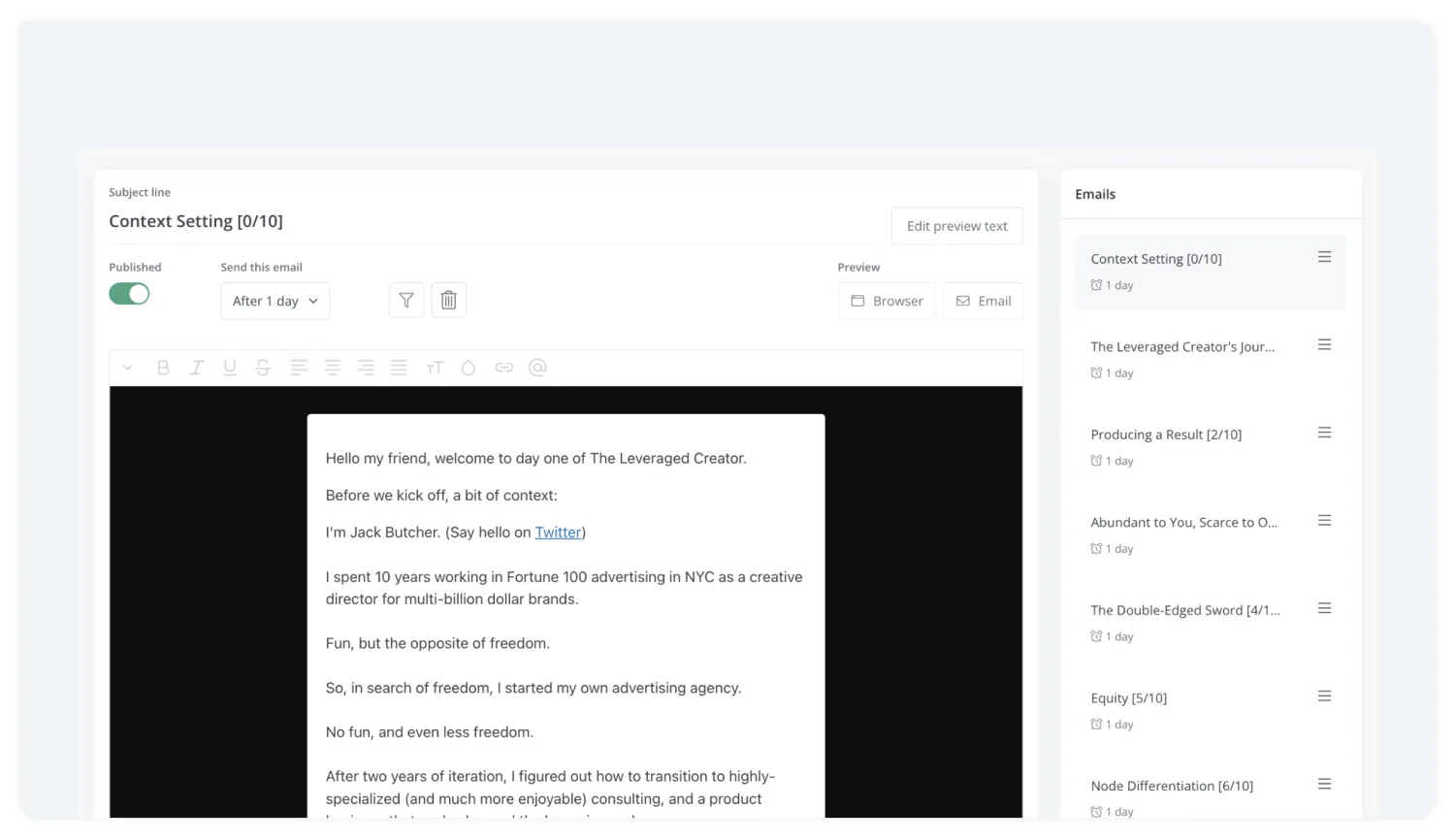
What the first email in the series looks like through Kit’s email editor.
Because most of Visualize Value’s products are digital, email is an important part of the experience. Says Jack, “I have another product called the Daily Manifest, which is an entry-level product designed to help take control of your time. That sends an email to deliver the product and then another soft sell, if you’re interested in learning more about Visualize Value, you’ll like this other product.”
Each of their products is linked together through a series of email sequences, all run through Kit.
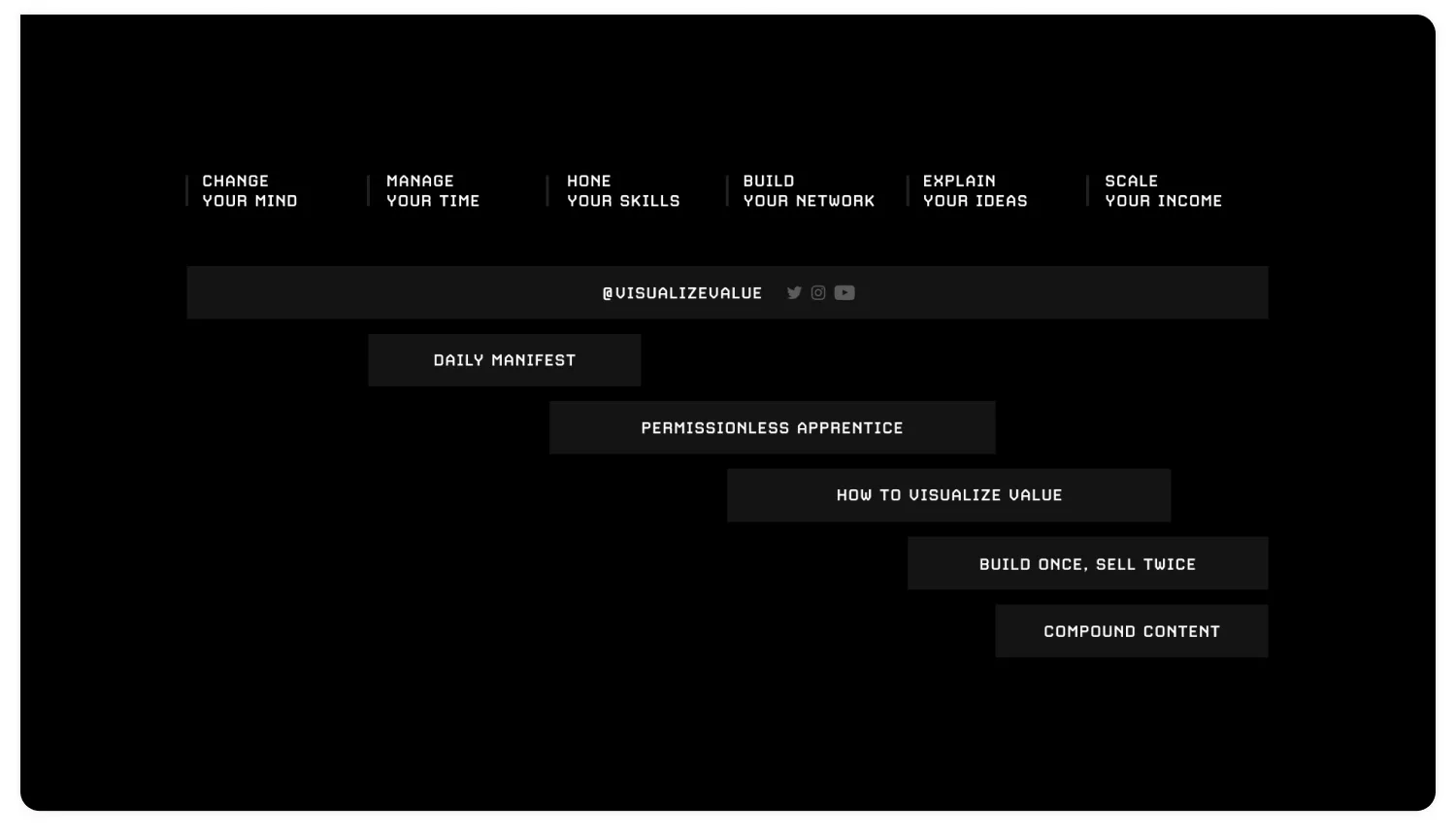
An illustration of Visualize Value’s automated emails through Kit.
Visualize Value uses the popular ecommerce platform Shopify to sell various products, from a quick daily manifestation template to long-form courses to help creators build their skills. Kit’s Shopify integration ensures that transactional emails look and feel like they came from you.
“The Shopify integration is incredible. It’s so tight that I can see what somebody bought, when they bought it, and use that logic to build segmentation into my automations,” says Jack. “If I’m sending a broadcast, I can also exclude anyone who has already bought it. It’s so powerful, and I wouldn’t call myself a technical expert with email or anything like that, and it’s easy enough for me to use.”
Jack primarily uses automated emails for his products as a way to collect feedback and to make sure anyone who purchases from him has a way to get in touch. “I come back to that theme of transparency again with automated emails,” he says. “People know when it’s automated. Don’t trick them into thinking you’re sitting there writing this stuff. That’s completely changed how I write my emails.”
Why less is more with marketing today
You don’t need to send an email every single day to be successful. And you don’t have to be an expert, either. “I have a lot to learn when it comes to email, but that’s why I love Kit,” he says.
Kit offers powerful behind-the-scenes automations and easy-to-use email creation tools so you can focus on delivering the most value for your subscribers. Whether you’re looking to build up your email list with beautiful landing pages and sign-up forms or maximize your investment with digital products and subscriptions, we’re here to help. Sign up for free today.
